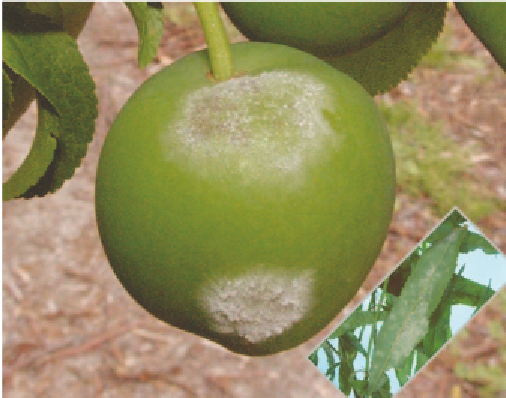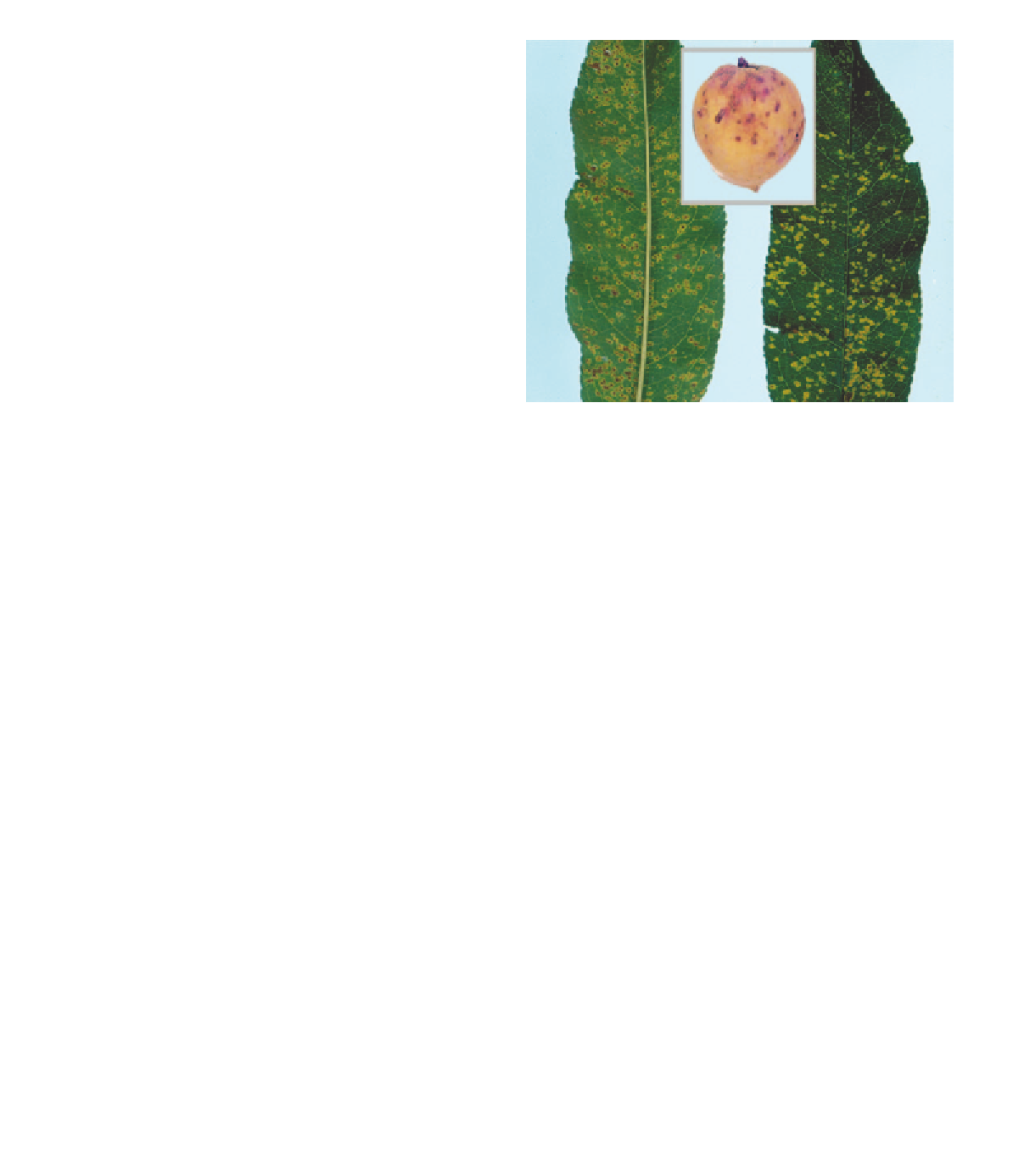Agriculture Reference
In-Depth Information
Spray with a recommended fungicide just before
budswell to control overwintering spores. Extra
applications may be required if the disease has been
severe in previous seasons.
•
In badly affected orchards, increase tree vigour by
thinning more fruit than usual, ensuring suffi cient
irrigation and increasing nitrogen fertiliser.
•
POWDERY MILDEW
■
Cause
The fungus
Podosphaera pannosa
(previously
Sphaerotheca
pannosa
) (refer to the chapter on Common diseases of
perennial fruit crops).
Importance
Powdery mildew is uncommon in Australian stone fruit
orchards and is most likely to occur on young plants in
nurseries. Apricot plants are the most likely to be affected.
Fig 17.23 Rust on the upper and lower surfaces of peach leaves.
Inset: symptoms on peach fruit.
Twigs: dark brown to black spots break open to reveal a
light brown mass of spores.
RUST
■
Branches: if complete defoliation occurs, branches can
become sunburnt, leading to reduced vigour/f lexibility and
possible infection by wood-rotting fungi. Brittle branches
may also break under the weight of the crop.
Cause
The fungus
Tranzschelia discolor
.
Fruit: symptoms on apricot, nectarine and peach fruit
include small sunken spots, with dark, brown-reddish centres
often with a pale green border. Brown spores may sometimes
be present. If severe defoliation occurs, fruit may not mature
properly and sugar levels will remain low at harvest.
Symptoms
Leaves: small spots develop, which are at first pale yellow
and later turn brown. The undersides of the leaves are
covered with a brown, powdery mass of spores. If spots are
numerous, large areas of the leaf may be killed, and leaves
will fall. Towards autumn the brown spots on the
underside of leaves often turn black.
Source of infection and spread
The fungus overwinters on twigs and dead leaves. The
large numbers of spores produced are spread by wind and
rain. Warm, wet weather favours infection and disease
development.
Importance
Rust can be severe from mid-season right through until
after harvest in affected areas, unless fungicides are
regularly applied. The disease causes premature leaf fall
and reduces growth and yields in subsequent years.
Infected fruit are unsaleable.
Management
•
Choose less susceptible varieties.
Apply recommended fungicides in orchards with a
history of severe infections.
•
Fig 17.22 Powdery mildew on an orchard plum. Inset: leaf symptoms.












